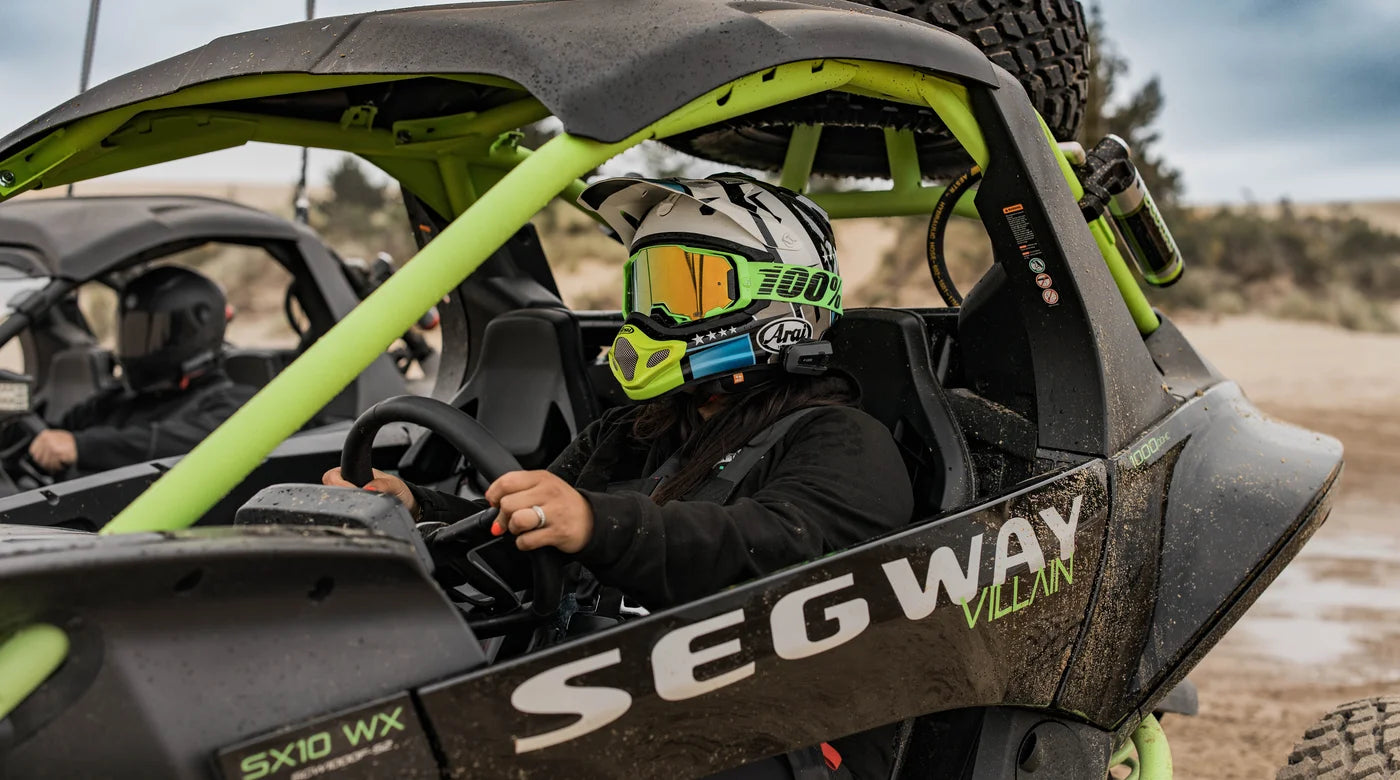The name all-terrain vehicle says it all. ATVs can travel on all types of ground, including hard and soft sand, helping you scale dunes and beachside trails like a true explorer. However, all those fine particles can leave your wheels spinning out. Without trees or another vehicle to counter the force, your ride could get stranded, increasing the risk of water damage and general decay. Use these ATV sand dune riding tips to tackle any slope or trench along the path.
6 Tips for Sand Dune Riding
1. Wear the Proper Equipment
You might long to feel the wind in your hair and the sun on your skin, but wearing nothing but a swimsuit when riding an ATV can lead to injury. Wear the proper ATV riding gear to protect yourself from falls, including a full-face or half-face helmet with goggles to shield yourself from the glare and flying sand, gloves, boots and light moisture-wicking layers that dry quickly when wet. Wearing long sleeves and pants protects you from sunburn. Bring navigation tools, a radio and plenty of water to stay hydrated.
2. Stick to the Path
The trail markers preserve local ecosystems and protect you from unstable terrain. Being surrounded by sand can make knowing which way to go difficult. Bring a compass and a paper map to avoid falling into a sand trap. If you don’t see a sign, follow the tire marks. Beaches and dunes attract big crowds. Limit your speed to 15 mph when driving around pedestrians and campsites.
3. Ride in a Group
Use the buddy system to avoid leaving your ATV on the dunes. Riding is more fun in a group and gives you something to grab onto if you get stuck. Bring a winch and chains to uproot anyone trapped in the sand.
Your companions will also help you stick to the path and navigate the terrain when everything looks alike. Find off-road communication to talk hands-free with the next closest rider. You can watch the path and share tips without taking your eyes off the prize.
Use the Cardo Packtalk ORV to automatically connect to your pals when in range so you don’t have to fuss with the device. It mounts seamlessly to any helmet to keep the conversation going.
Use Off-Road Communication to Connect Wirelessly on the Dunes
Source: Nomad_Soul/Shutterstock.com
4. Prep Your Ride
Most ATVs can handle sand, but making a few modifications will help you keep your grip. Rigid tires with thick tread patterns perform better in the mud. Swap them out for paddle tires to maximize contact with the sand. They are more malleable and can adjust to the sand’s position like an inflated balloon instead of grinding through wet terrain.
Adjust the psi based on the terrain. Not all sand behaves the same way. Your tires need less air, usually 3 psi, in the desert because the sand is looser. Go up to 8 psi in thick, wet sand. Beaches with varying moisture levels are more stable, so you might be okay in the 5-6 psi range. Remember to adjust your tire pressure before riding on solid ground.
5. Know How to Get Unstuck
Losing traction is common when there’s nothing for your tires to grab onto. If you feel the ATV slipping from under you, lightly apply the brake while adding throttle pressure to keep your forward momentum.
If you lose traction entirely, stop and try reversing to avoid a bad situation. Hitting the gas when you’ve lost your grip will only bury your tires in the sand. Use traction pads to give your tires a firm surface. Dig out the tires and pour water on the sand to stabilize it.
6. Drive Over Dunes at an Angle
Hitting the sand straight on when going up or downhill can leave you fighting a losing battle. Too much loose sand could push you down the dunes, or a steep decline may give way, leaving you trapped in a rut. Ride at an angle when climbing or descending to avoid causing a mini avalanche. Stay focused on the trail to give yourself more time to steer clear of obstacles.

Source: Sergei Domashenko/Shutterstock.com
Sandy beaches and dunes can be one of the trickiest terrains to master on an ATV. The ground shifts frequently beneath your tires, providing little traction. Adjust your vehicle and riding style on the coast to enjoy your time in the sun.





